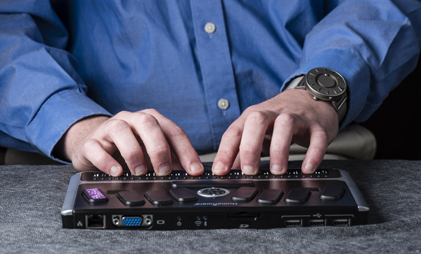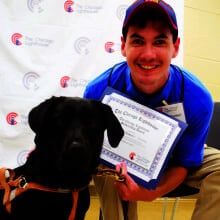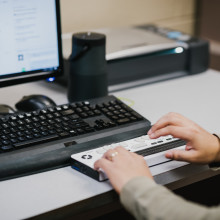
How Does Technology Help People Who Are Blind or Visually Impaired?
May 7, 2015
If someone had told me 10 years ago that one day my cell phone would read print documents and describe things to me, I would’ve laughed and thought this person had watched too many sci-fi movies! This is all to say that today’s technology not only makes life easier for everyone, but in the case of those of us with vision loss it allows us to do even the simplest of things others might not have to think about.
Thanks to modern technology, people with vision loss can do numerous things such as write documents, browse the internet and send and receive emails. Screen Reading software and special talking and Braille devices allow those of us with no vision to use computers, cell phones and other electronic devices independently. Similarly, people with low vision can use screen magnification software and devices that will allow them to see letters, pictures and other objects without having to struggle or strain their remaining vision. This technology – commonly known as assistive or adaptive technology – is continually evolving, and has removed many access barriers for people with vision loss.
Besides allowing us to carry out routine tasks at work and school, assistive technology also enables people with visual impairments to be more independent at home. We can now read the mail, listen to audio books, get step-by-step walking directions to unfamiliar places, record important information and so much more with special standalone devices designed for people with no or low vision. There are also devices like talking watches, thermometers, scales, blood glucose and blood pressure monitors that help us live independent and healthy lives.
People with low vision can also benefit from devices that magnify or enlarge objects. This equipment can help them take notes, read small print on electronic devices and watch TV. In other words, simple tasks that might have previously required the assistance of a sighted person can easily be done completely independently by people with some or no vision.
Cell phones and tablets have revolutionized the way people who are blind or visually impaired interact and use technology. Screen reading and magnifying software – like that used in computers – allows us to use these devices independently. However, the unique aspect about cell phones and tablets is that they can serve many of the purposes for which standalone devices and software were previously developed thanks to apps.
Nowadays I can easily do many of the things that previously required special software or devices on my iPhone or iPad. By using a special app called the KNFB Reader, I can take a picture of a print letter and my phone will read it out loud within a matter of seconds. I no longer carry around a heavy or bulky tape recorder. With an app called Read2Go, I can download books in a matter of minutes or seconds onto my iPad and begin listening to them in no time!
Tablets and cell phones also enable people with visual impairments to do things that were previously impossible, or – at the very least – challenging. It is now possible for the iPhone, for example, to describe the color, shape and size of objects to someone who is blind thanks to an app called TapTapSee. Furthermore, other apps, such as Be My Eyes, connect blind or visually impaired individuals with a sighted person, who will then assist them by describing things. To put it simply, the sighted person (who can be located almost anywhere in the world) can be a virtual pair of eyes for the blind individual.
This is only but a brief explanation of how assistive and mainstream technology has helped and improved the quality of the lives of those of us with visual impairments. Since many types and brands of such technologies exist, it is virtually impossible for us to cover this topic in a single post. Assistive technology sure has opened a lot of doors and removed countless barriers, and I am very excited to see what it has to offer for all of us in the future.
For information and reviews about the latest assistive technology products and apps, I invite you to check out our very own technology blog here. How has assistive technology helped you? Please comment! You can submit your questions about blindness or visual impairment to sandysview@chicagolighthouse.org.
Thanks for reading!






